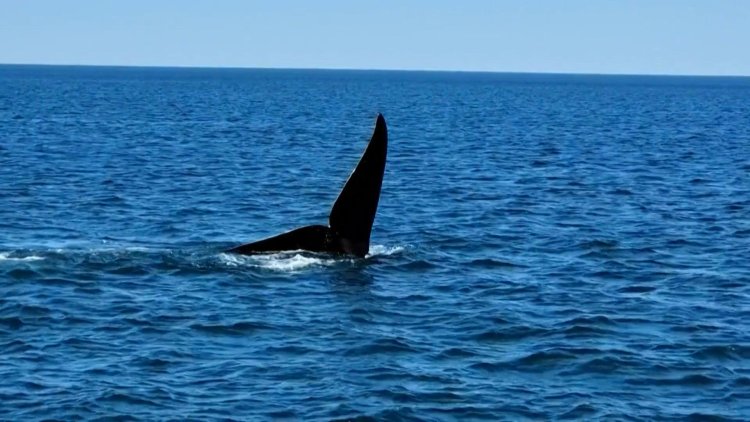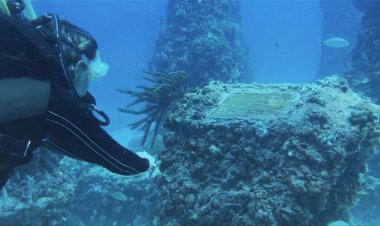Endangered North Atlantic right whales make a stand in Cape Cod

After many hours scouring Cape Cod Bay and a few false alarms, those aboard the Research Vessel Shearwater on a bright April day make their first sighting: three North Atlantic right whales, including a rare mother-calf pair.
The captain cuts the engines and a trio of marine biologists spring into action, rapidly snapping photos and noting markings that can be used to identify individual animals and track injuries -- a vital part of conservation efforts for a species believed to have 336 members.
While the whaling that drove them to near-extinction has long been banned, unintended collisions with ships and entanglements with fishing gear are today the main threats for Eubalaena glacialis, one of the most endangered mammals in the world.
Approaching 60 feet in length and weighing over 70 tons, the North Atlantic right whale is the third largest whale in existence. Their life spans are similar to humans, with individuals living up to a century.
"Unfortunately, since 2010, their population has been decreasing," explains Christy Hudak, the leader of the Center for Coastal Studies' expedition that set off from Provincetown, a historic New England fishing village that is today popular for whale watching and gay tourism.
"We're trying to spread the word regarding these amazing creatures and just how key species they are in the circle of life."
The CCS crew coordinates with an aerial survey plane, while a vessel from another research group flies mini-drones equipped with cameras over the whales as part of a study on the impact of rope entanglements on their growth rate.
Despite strict ship speed limits of 10 knots in some protected areas, and new rules brought in by authorities to limit the number of ropes between buoys to crab and lobster traps on the seafloor, conservationists worry it's not enough.
The problems are compounded by climate change: as the waters of the North Atlantic warm, a tiny oil-rich crustacean called Calanus finmarchicus that is the whales' main food resource is becoming more scarce in their habitat, which stretches from Florida to Canada.
Cape Cod Bay isn't warming as fast as the whales' more northern waters in the Gulf of Maine, and as a result, it is here, in their traditional feeding and nursing grounds, that the marine giants are now more commonly spotted.
Apart from photography and detailed note-taking, the crew also carry out plankton surveys: casting nets and using water pumps to take samples at various depths for lab analysis.
Knowledge of the composition and density of these zooplankton helps scientists predict peak whale arrivals and departures.















